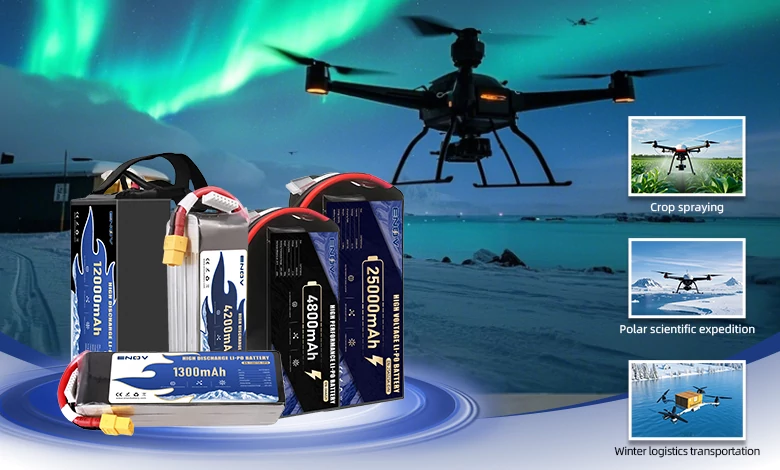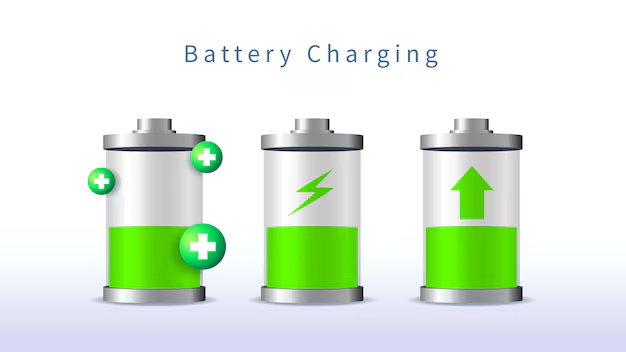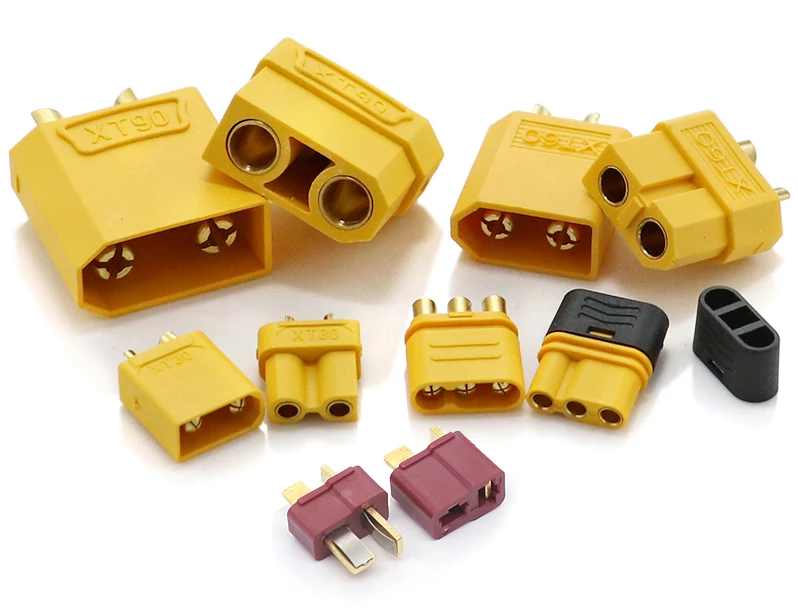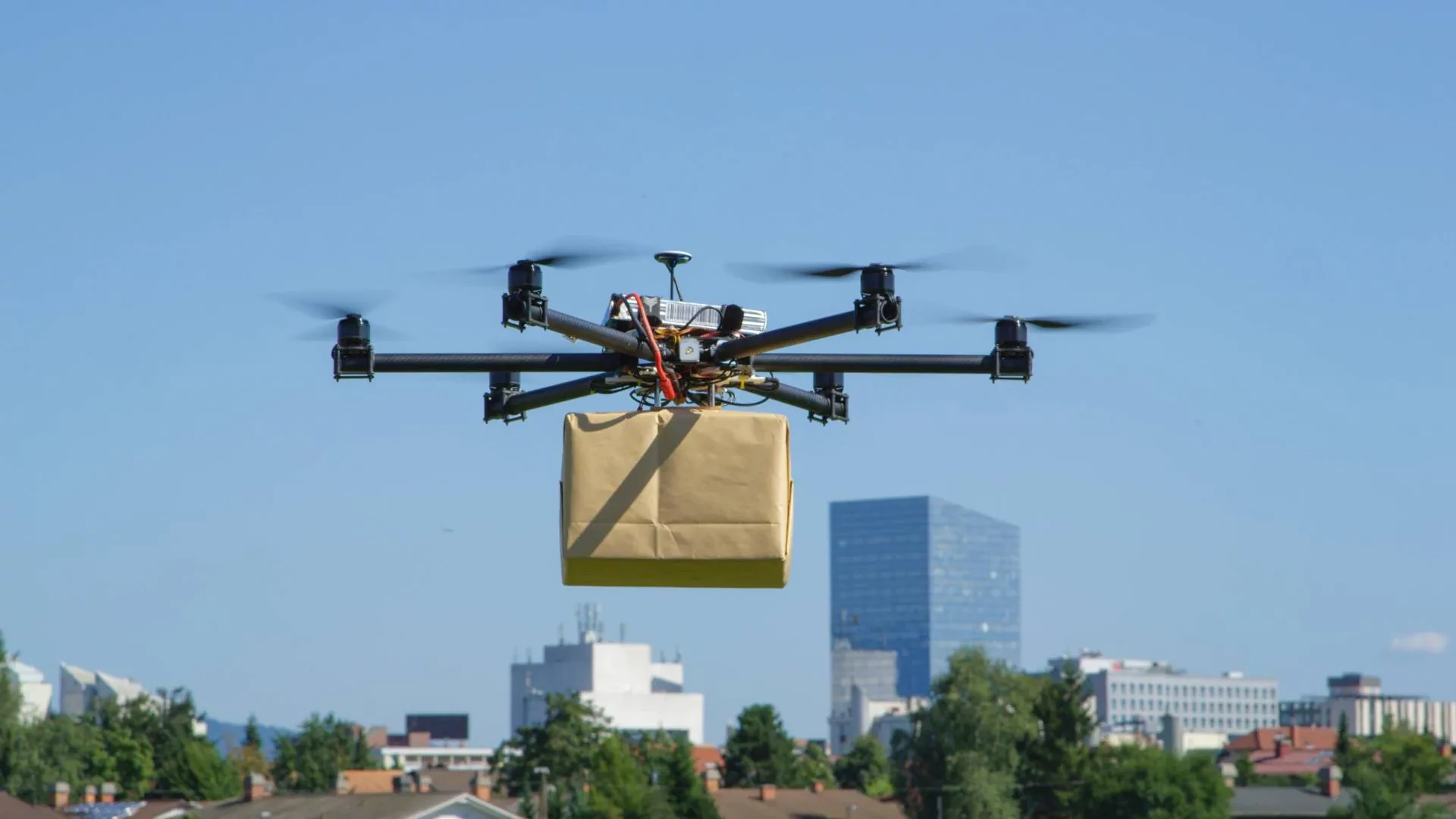Tilt-Rotor UAV Guide: A New Type of Aircraft Combining the Advantages of Helicopters and Fixed-Wing Aircraft

ENOV High-Energy drone batteries power industrial and commercial drones. Delivering 220–320 Wh/kg energy density, they enable long flight times (30+ mins) and support fast charging (2C). Perfect for aerial photography, surveillance, and delivery drones.
As an innovative aircraft, the tilt-rotor UAV has successfully integrated the vertical take-off and landing (VTOL) and hovering capabilities of helicopters with the high-speed cruising and long-range advantages of fixed-wing aircraft, and is vividly known as an “airborne hybrid”. With its unique design and performance, it shows broad application prospects in various fields such as military and civilian use, while also facing many technical challenges.
I. Core Design and Working Principle
(I) Structural Design Features
Tilt-rotor UAVs usually adopt a fixed-wing layout, with the key lying in the tiltable rotor system installed at the wingtips. Some models only allow the rotor nacelles to tilt while the main fuselage remains horizontal, such as the U.S. V-22 Osprey; other models feature wings that tilt synchronously with the rotors, resulting in a more compact structure but relatively higher control difficulty. Taking the Chinese-made “Lanying R6000” as an example, two turboshaft engines are mounted at the tips of its main wings, each equipped with an engine nacelle rotation mechanism to facilitate the switching of flight configurations. A central wing box is arranged above the fuselage, and a double vertical tail design is adopted, with the horizontal tail bent upward to form a double vertical tail structure.
(II) Flight Mode Switching Mechanism
• VTOL and Hovering Mode: In this mode, the rotor axis is perpendicular to the ground, and the rotation of the rotors generates upward lift. When the total lift exceeds the UAV’s own weight, vertical take-off can be achieved. By precisely adjusting the rotational speed or pitch angle of each rotor, the attitude balance of the aircraft can be controlled, enabling movements such as forward flight, side flight, and hovering without relying on a runway. It can take off and land in narrow or complex terrains such as ship decks and mountainous areas.
• Transition Mode: After take-off, the rotor tilting mechanism starts to operate, controlling the rotors to gradually tilt from the vertical position to the horizontal position. During this process, the direction of the lift changes accordingly, and part of the lift is converted into thrust to propel the UAV forward. As the tilt angle increases, the wings gradually generate aerodynamic lift, and the aircraft’s flight attitude slowly transitions from the vertical state to the horizontal state.
• Horizontal Cruising Mode: When the rotors are fully rotated to the horizontal position, their function is similar to that of the propeller thruster of a fixed-wing aircraft, mainly providing forward thrust for the UAV. At this time, the aircraft mainly relies on the aerodynamic lift generated by the wings to maintain the flight altitude, thereby achieving high-speed and long-endurance flight.
II. Performance Advantages
(I) Strong Take-off/Landing and Environmental Adaptability
It does not require a dedicated runway and can take off and land in narrow or complex areas such as forests, farms, residential areas, ship decks, and mountainous regions. With extremely low requirements for take-off and landing sites, it can adapt to a variety of complex terrains and harsh weather conditions, and has significant advantages in emergency scenarios.
(II) High-Speed and Efficient Flight
Its cruising speed is much higher than that of traditional helicopters, generally ranging from 100 to 300 km/h, and some models have even better performance. For example, the V-22 Osprey has a cruising speed of 509 km/h and a maximum speed of 650 km/h, which is comparable to that of conventional turboprop fixed-wing aircraft. At the same time, its cruising altitude capability is also far beyond that of helicopters, easily reaching 6,000 meters or even higher, while helicopters usually do not exceed 3,000 meters. This enables the tilt-rotor UAV to complete some tasks that were originally only suitable for fixed-wing aircraft without the need for a runway.
(III) Long Range and Large Load Capacity
During cruising flight, the wings are mainly responsible for providing lift, and the rotors only need to overcome relatively small flight resistance. Therefore, the fuel consumption rate is significantly lower than that of helicopters, and the range is greatly increased. The range of conventional helicopters generally does not exceed 1,000 km, while the V-22 Osprey has an in-flight refueling range of over 1,850 km, and the total range can reach 3,950 km when filled with two auxiliary fuel tanks; the maximum range of the “Lanying R6000” is even more than 4,000 km. In terms of load capacity, some models perform excellently. For instance, the “Lanying R6000” has a maximum take-off weight of approximately 6,100 kg and a maximum effective load of 2,000 kg; the “Assault Eagle – 2000” can carry 5 people or 500 kg of materials.
(IV) Low Transportation Cost
Combining its advantages of low fuel consumption, high speed, long range, and large load capacity, the tilt-rotor UAV has significantly improved transportation efficiency, and its transportation cost is much lower than that of conventional helicopters, making it highly economical in fields such as material transportation.
(V) Outstanding Noise Control
When flying forward (in aircraft mode), the tilt-rotor UAV is essentially quieter than helicopters. This feature makes it more practical for commercial applications in densely populated areas and can also reduce the risk of being detected in military use. However, during hovering flight, its noise level is usually equivalent to that of a helicopter of the same size. Noise simulations show that the cruising noise in the cabin of a tilt-rotor aircraft capable of carrying 90 passengers is lower than that of the Bombardier Dash 8 aircraft, although the low-frequency vibration may be relatively higher.
III. Typical Representative Models
(I) European and American Models
• V-22 Osprey: Jointly developed by Bell Helicopter Textron and Boeing of the United States, it is the world’s first tilt-rotor aircraft to be commissioned. It officially entered service in the U.S. military in 2006. With a maximum take-off weight of 27.4 tons and a maximum load capacity of 9 tons, it can carry 24 armed soldiers and take off and land on U.S. aircraft carriers and amphibious assault ships. It has a full-fuel range of 3,590 km and a maximum speed of 650 km/h, exceeding the speed of all transport aircraft in the world.
• Bell V-247 Vigilant: An unmanned tilt-rotor aircraft mainly used for reconnaissance and transportation tasks. It inherits Bell’s advantages in tilt-rotor technology and has strong mission adaptability.
• Bell V-280 Valor: A tilt-rotor aircraft developed by Bell Helicopter Textron of the United States. It has excellent performance in terms of speed, range, and load capacity, further promoting the development of tilt-rotor technology.
• AW-609 Transport Aircraft: Co-developed by Bell Helicopter Textron of the United States and Leonardo of Italy, it has VTOL and high-speed cruising capabilities and is suitable for various transportation scenarios.
• Joby Aviation eVTOL: Adopting an electric tilt-rotor design, it mainly focuses on the urban air mobility field, emphasizing environmental protection and efficiency, and provides a new solution for short-distance transportation within cities.
(II) Chinese Models
• “Lanying R6000”: It has VTOL and high-speed cruising capabilities and has successfully rolled off the production line. Two turboshaft engines with rotation mechanisms are installed at the tips of its main wings, and a central wing box is located above the fuselage. It adopts a double vertical tail design, with a maximum take-off weight of approximately 6,100 kg, a maximum effective load of 2,000 kg, a maximum flight speed of 550 km/h, and a maximum range of over 4,000 km.
• “Assault Eagle – 2000”: Adopting a hybrid drive mode, it can carry 5 people or 500 kg of materials, with a range of 800 km, and plays an important role in personnel transportation and material delivery.
• LTV20: A miniaturized tilt-rotor UAV suitable for various tasks such as aerial photography, shipborne reconnaissance, and fire strike, with high flexibility.
• “Rainbow”-10: It has a cruising speed of 150 km/h and an endurance of more than 6 hours, and plays an important role in fields such as reconnaissance and surveillance.
IV. Wide Application Scenarios
(I) Military Field
• Reconnaissance and Surveillance: Relying on its VTOL capability, it can be deployed in complex battlefield environments. The hovering function facilitates long-term observation of target areas, and the high-speed cruising capability enables it to quickly reach the mission area, acquire intelligence, and transmit it in real time.
• Logistics Support and Material Transportation: With its characteristics of large load capacity and long range, it can transport weapons, equipment, ammunition, food, medicine, and other materials to remote outposts and front-line battlefields. Models such as the V-22 Osprey and “Assault Eagle – 2000” perform prominently in this field.
• Fire Strike: Some models, such as the LTV20, can be equipped with weapon systems to perform fire strike tasks and conduct precise attacks on enemy targets.
•Amphibious Assault and Special Operations Penetration: It can take off and land on platforms such as amphibious assault ships, quickly deliver combat personnel and equipment to the landing area to support amphibious assault operations; it can also be used for special forces penetration to quietly transport special operations personnel to the mission location.
(II) Civilian Field
• Logistics and Distribution: Without the need for a dedicated take-off and landing site, it can reach deep into urban communities, rural areas, remote mountainous areas, etc., to achieve efficient distribution of express delivery, fresh food, medicine, and other materials, and has obvious advantages especially in areas with inconvenient transportation.
• Power Line Inspection: It can continuously cruise at a speed of 90-145 km/h for 3-5 hours. Equipped with a high-definition oblique photography system, it can overlook the power lines from high altitudes, record and transmit the line status in real time, quickly detect fault points, greatly improve the inspection efficiency, and reduce the investment of human and material resources.
• Agricultural Plant Protection: It can hover or fly at a low speed over farmland, accurately spray pesticides and fertilizers, with a wide coverage area and high operation efficiency. It can effectively reduce agricultural production costs and minimize the harm of pesticides to operators.
• Urban Fire Fighting and Emergency Rescue: In urban fires, it can quickly reach the fire site, hover to observe the fire situation, and provide fire information for firefighters; after disasters such as earthquakes and floods, it can penetrate into the disaster area to search for trapped people and transport rescue materials, striving for valuable time for rescue work.
• Geological Exploration and Surveying: It can be equipped with relevant exploration equipment to conduct geological exploration in mountainous areas, deserts, oceans, and other regions to obtain geological data; it can also perform high-precision surveying and mapping to provide accurate surveying and mapping data for urban planning, road construction, resource development, and other purposes.
• Emergency Medical Transportation: It can quickly transport critically ill patients from remote areas to urban hospitals, or transport emergency medicine and organs, striving for time to save lives, and is especially suitable for situations with traffic jams or road damage.
• Urban Air Mobility: Electric tilt-rotor UAVs such as the Joby Aviation eVTOL have provided new possibilities for urban air mobility. In the future, they are expected to become a new type of transportation for short-distance travel within cities, alleviating ground traffic pressure.
V. Faced Technical Challenges
(I) Structural and Aerodynamic Aspects
• Complex Aerodynamic Characteristics During Tilting: The tilting of the rotors is an unsteady aerodynamic process, and it is difficult to accurately determine its aerodynamic characteristics. Usually, it is necessary to combine theoretical calculations and experiments, but there are still many difficulties in establishing an accurate mathematical expression model and selecting an appropriate prediction algorithm.
• Prominent Rotor-Wing Interference Problem: Tilt-rotor aircraft have various aerodynamic interferences, such as rotor-wing, rotor-rotor, rotor-fuselage, and rotor-tail interferences. Among them, the aerodynamic interference between the rotors and the wings during vertical flight and hovering is the most serious, which has a great impact on the effective load of the UAV. How to reduce these interferences is an important technical challenge.
• Complex Dynamic Problems: The rotor system and engine nacelle installed at the wingtips will generate coupled motions such as vibration, rotation, and tilting. These motions have a significant impact on the static and dynamic characteristics, aeroelastic response, stability, and service life of the wings. Its dynamic analysis is significantly different from that of traditional helicopter rotors, requiring new theories and methods to support research.
(II) Control and Safety Aspects
• High Difficulty in Flight Control: The flight mechanics model of tilt-rotor aircraft is complex. Especially during the tilting process, the direction of the rotor axis and the rotational speed of the rotors change greatly, resulting in significant changes in lift, thrust, and torque. At the same time, under the influence of unsteady and nonlinear factors, the prediction accuracy of the rotor dynamic model and aerodynamic model is lower than that of traditional aircraft. The flight mechanics analysis and control methods of traditional helicopters are no longer applicable, so new analysis models and control methods need to be established to ensure the stability of the flight attitude and the smooth switching of modes.
• Difficulties in Dealing with Single-Engine Failure: Due to its special structure, the problems faced by tilt-rotor aircraft in the event of single-engine failure are quite different from those of helicopters or fixed-wing aircraft. How to effectively control the aircraft and ensure flight safety when a single engine fails, and how to reasonably select the system reliability and redundancy, all require in-depth research and solutions.
(III) Cost and Reliability Aspects
• High R&D and Maintenance Costs: The tilt-rotor UAV has a complex structure and involves a variety of advanced technologies, requiring a large amount of capital and time investment in the R&D process; at the same time, the key components such as its power system and transmission mechanism have complex structures, resulting in high maintenance difficulty and relatively high maintenance costs, which to a certain extent limits its wide application.
• High Reliability Requirements: The power system, transmission mechanism, tilting mechanism, and other components are all key parts. Any failure of these components may affect flight safety. Therefore, the reliability design of these components has extremely high requirements, and strict control is needed in terms of material selection, manufacturing process, quality inspection, etc., to ensure that the UAV can operate stably and reliably under various working conditions.
Quick inquiry
Drop us a line, and we’ll get back to you within 24 hours.

Ariana Yuan
Digital Operations Manager
Website Planning|Marketing Project Management for Drone Batteries|Scheduled Content Refresh|SEO Optimization

Ariana Yuan
Digital Operations Manager
Website Planning|Marketing Project Management for Drone Batteries|Scheduled Content Refresh|SEO Optimization




